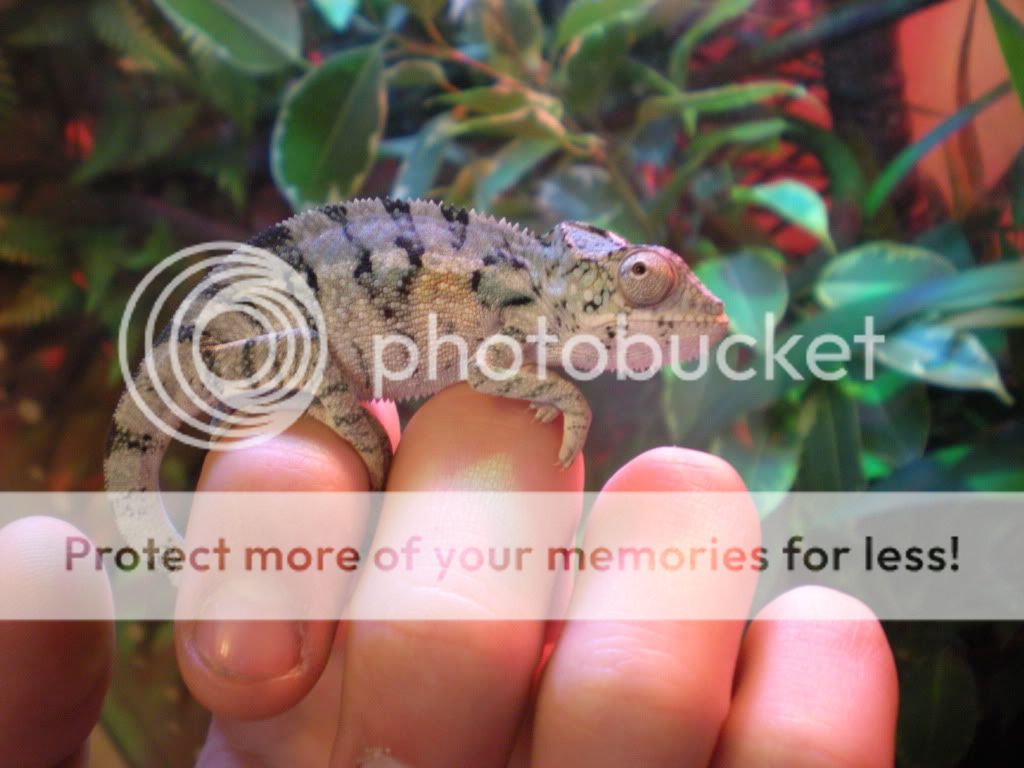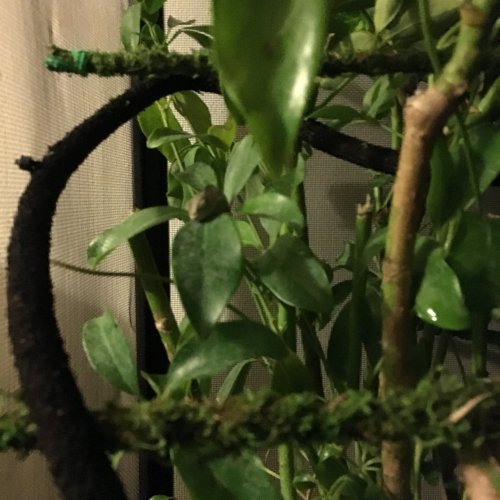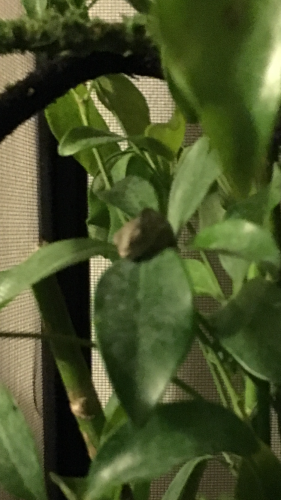cyberlocc
Chameleon Enthusiast
@cyberlocc The bulb is 8 1/2" from his basking spot it's a Flukers basking bulb the new bulbs I got are regular incandescent bulbs from the hardware store.
Ya go with the 50w, but first find out how old that guy is really. I suspect he is a month old I am not even sure I would provide a basking bulb at all for that cham.
This is a pic of a 3 month old,

Yours is no where near 4. 4 weeks maybe lol.
Have him walk on a ruler to get an idea, at 10 weeks right now my cham is 2.5 inches from nose to vent. Mine is a Ambilobe panther.


